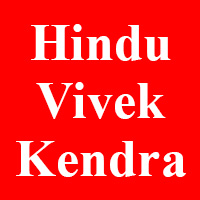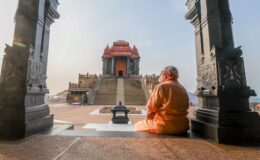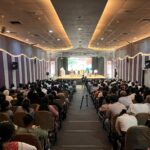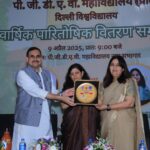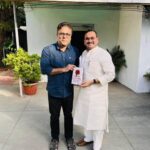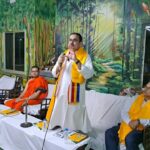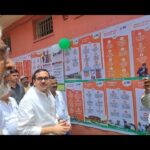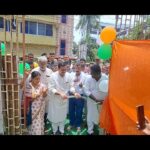Marxist Historians with Stalinist Mindsets
- By : Anirban Ganguly
- Category : Articles
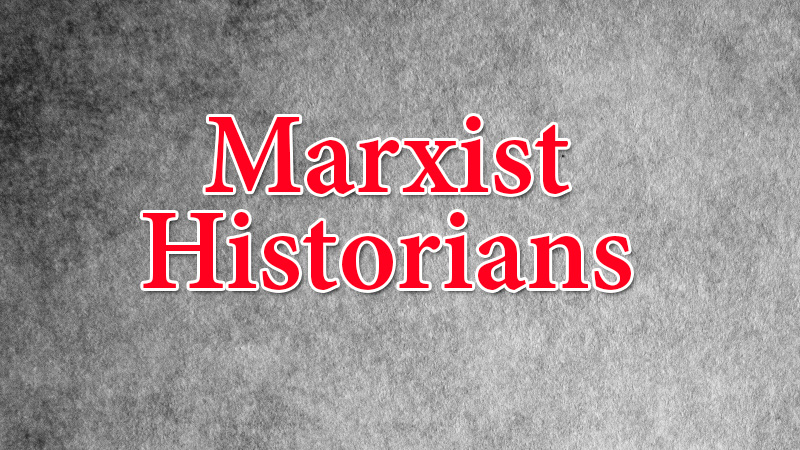
“Eminent” Marxist historians possessing an intolerant Stalinist mindset have struck again. By referring to the Prime Minister in an inane resolution full of the pathos of the dying embers of an intellectual era and worldview that is fast decaying, they have spoken of the need to “isolate history-writing from chauvinistic approaches” and have suddenly expressed a new found concern that such attempts tarnish the good repute of this country.”
True to their legacy and duplicitous mindset – these historians always see another reading of India or Indian civilisation, which is free of their frameworks or instrumentation and which invariably, looks for the positive and the creative, as “chauvinistic” or “unscientific” needing immediate condemnation, damnation or course correction. I have always argued that any reading of India that does not dissect or look for clashes, conflicts of class, oppression or marginalisation and is not based on deconstructionism is looked upon with suspicion by this section. The fact that through such an approach these regulators of the narrative, themselves display a great intolerance and irrationality is conveniently obfuscated.
The sullying of India’s “good repute” that they speak of was of no concern to them when they goaded, not long ago, a section of the academia – perennially sustained by foreign fellowships – and a section of the political class to openly plead with foreign bosses and “capitalist” Governments to deny visa and oppose the foremost Prime Ministerial candidate of India, one who went on to win one of the largest mandates in contemporary Indian political history. That their fellow travellers on the ideological path testify against “oppression of minorities” in India before foreign bodies, “capitalist” forums which selectively and maliciously target in India’s “adverse” record of protecting minorities is of no concern to them or to their sudden emotional attachment to India’s “good repute.”
One cannot expect better from a class that has always prided itself in creating and fanning an anti-statist, anti-establishment mindset among a section of the populace while time and again sneering at Constitutionality and the very concept of the Indian state and civilisation. To hope that they will ever show a minimum modicum of deference to the chair of the Prime Minister of India is perhaps too much to expect.
Among the “eminent” historian who drafted the relic of a resolution was the “venerated” Irfan Habib, the most volubly intolerant of the lot – who sees any scholar with a different approach to the history of India as one who possesses “no sense of history”, who can “never be engaged with” and whose works are not worth reading or acknowledging. For years this intolerant-historian has been at the forefront of abusing those who have articulated a different perception and have in their own indefatigable way sought to push it ahead or promote it. Irfan Habib’s and his coterie’s – who are all wedded to a certain political ideology and workers of a particular party – control of history writing in India is forwarded as scientific and non-political, their writing history textbooks are with the spirit of time and for the well-being and balanced growth of young minds but the moment others produce their own research, or their findings which are at variance with their “eminences”, these ought to be virulently attacked and silenced – such is the hollow intellectual secularism that these scholars have essentially practiced.
Irfan Habib himself has often displayed a strong streak of irrationality, especially on the Ram Temple issue when his pet theories were collapsing under the dead weight of empirical evidences. Let us sample the antics of this “emotional Marxist.” In her seminal study “Ram and Ayodhya”, historian Meenkashi Jain devotes an entire chapter to psychologically dissecting these types and I am not even entering into the hilarious statements that these so called historians gave before the Court on this matter.
Let us see how intolerance is second nature of the likes such as Habib. When the Allahabad High Court, in a fair spirit, ordered excavations at Ayodhya “with a view to determining what lay beneath the Babri structure”, Irfan Habib opposed the move. So emotionally involved was Habib, that, throwing to winds all semblances of rationality, civility and scientific temper, he began to “cast serious aspersions on the integrity of academicians and institutions in disagreement with his views.” At a talk he delivered from his perch at AMU on “Ayodhya: the National Stake” in February 1991, Habib attacked “senior archeologists and historians associated with the Ayodhya Movement with a passion seldom seen in Indian academic circles.” Everyone who differed from him was showered with intense vitriol, thus the late Dr SP Gupta, former Director of the Allahabad Museum, himself an archeologist of great standing was “always regarded as being on the ‘lunatic fringe’ or BR Grover, former Chairperson of the ICHR “thinks that the VHP is the coming regime [and] is a better astrologer than historian.”
For the veteran and internationally respected archaeologist Professor BB Lal, who had no known or ever displayed political affiliations, Habib had reserved his “special ire.” Just because Professor Lal was the “first to point to architectural remnants below the Babri Masjid”, Habib accused Lal of “professional dishonesty and in a signed article in his parent political party’s ideological rag, “People’s Democracy”, he derisively “described Lal as “the creator of ‘Mahabharata archaeology.’ When the ASI archaeological excavations proved Lal’s thesis, Habib went a step further to cast aspersions on the entire ASI team and questioned the team’s competency and vilified them. True to his intolerant spirit and denigration of Constitutional institutions Habib also “faulted the Allahabad High Court for accepting” the ASI report which was according to him “drawn up by two little-known officials” and attacked Justice Aggarwal for his “easy acquiescence.” Habib’s spirit of intolerance and name-calling is but symptomatic of the larger spirit displayed by the Left historians now dominating the Indian History Congress (IHC).
One needs to hear the lament of a veteran historian on how leading publishers were pressurised by this IHC group into rejecting a multi volume work on a new history of India just because they were produced by a certain organisation with a nationalist or “rightist” tilt. Suave on the exterior, forever espousing the cause of free thought, speech and expression, always at the forefront of any liberation struggle, these historians have themselves, in fact, been the most intolerant and fascist lot, slyly blocking, cutting to size, marginalising and finally throttling any alternate reading of India’s history.
Their lament or sermons, though, need not be taken in a very serious light and in any case, the IHC itself seems to resemble more and more an ice-age mammoth that has somehow outlived its relevance in this age and time. A thought about the pet theme of attack of ‘plastic surgery” may be in line here, a large amount of primary source material exists, painstakingly unearthed by non-Marxist social historians as well as Gandhians, which when utilised, portray a wholly different narrative of India – portraying a society which was in possession of advanced knowledge systems. But our historians of the IHC vintage will never allow that to come to the surface for fear of generating a different and credible story of the achievements of Indian civilisation. The noted Gandhian and social scientist late Dharampal, for example, tirelessly did the rounds of European and British archives to unearth these long suppressed and lost descriptions of India – but of course Dharampal was no historian, he was not a member of the IHC!
It would perhaps be interesting to flag one such record – one that pointed at the existence of some knowledge of plastic surgery in India. Interestingly in a paper entitled “AN ACCOUNT OF TWO SUCCESSFUL OPERATIONS FOR RESTORING A LOST NOSE FROM THE INTEGUMENTS OF THE FOREHEAD, 1816, JC Carpve FRS, Member of Royal College of Surgeons, London, wrote of how “ a periodical publication, [Gentleman’s Magazine] for the year 1794, [contained] the following communication from a correspondent in India, which is accompanied by a portrait of the person mentioned, explanatory of the operation: “Cowasjee, a Mahratta, of the caste of husbandmen, was a bullock-driver with the English army, in the war of 1792, and was made a prisoner by Tippoo, [Tipu Sultan] who cut off his nose, and one of his hands. In this State, he joined the Bombay Army near Seringapatam, and is now a pensioner of the Honourable East-India Company. For above twelve months, he was wholly without a nose; when he had a new one put on, by a Mahratta surgeon, a Kumar, near Poona. This operation is not uncommon in India, and has been practised from time immemorial. Two of the medical gentlemen, Thomas Cruso, and James Findlay, of Bombay, have seen it performed.”
The two doctors subsequently sent a detailed note on the method of operations, the instruments used it and its final result, “For five or six days after the operation, the patient is made to lie on his back; and, on the tenth day, bits of soft cloth are put into the nostrils, to keep them sufficiently open. This operation is always successful. The artificial nose is secure, and looks nearly as well as the natural one; nor is the “scar on the forehead very observable, after a length of time.”
JC Carpve’s is not the sole record, Thomas Pennant in his two volume “The View of Hindoostan”, 1798, refers to this practice of plastic surgery and writes of how he got the veracity of its account checked by officers and doctors serving on the ground, it would not be out of place to quote Pennant at some length here:
“I was induced to make such personal inquiries as were within my reach in this country, concerning the Indian method, [plastic surgery] I did myself the honour to write to Sir Charles Mallet, who had resided many years in India, and who obligingly confirmed to me the report, that this had been a common operation in India, from time immemorial; adding, that it had always been performed by the caste of potters or brickmakers, and, that though not invariably, it was usually successful had seen the operation performed, and that it was of tedious length. From Dr Barry, of the India service, I learned, that he also had seen the operation; that it occupied an hour-and-a-half, and was performed with an old razor, the edge of which, being continually blunted in dissection was every moment reset. Tow was introduced to support the nose, but no attempt to form nostrils, by adding a septum, was made.”
Pennant goes to present a detailed description of the prevalence of the art of “plastic surgery” in India from “time immemorial.” Now, our historians led by Habib, may not like to agree with the Prime Minister who has, unfortunately for us, never studied or gained experience in a Western university under remarkably accomplished Western scholars of India, but would they doubt the claims of the “white” officials of the Raj, who had no emotional attachment to Indian civilisation, gave a damn if it ever existed and had just come to this land to make their pile and retire in glory? The descriptions are so detailed that some of these historians could perhaps offer their own noses to the method in order to satisfy their own scientific temper!
The essence of the Prime Minister’s statement was missed out by these ossified minds, minds who have lost touch with the emerging realities of India – the issue was not whether heads were replaced in ancient India – the larger message pointed at the high water-marks of Indian civilisational achievement – which were not simply otherworldly but which were very much of this world and displayed a rare mastery over nature and matter. But it is too much to expect of these historians – an anachronistic lot – who have managed to thrive in India and yet believe in nothing beyond matter!
Resolutions such as these – periodically regurgitated by these intellectually stunted types – have no place in the emerging India – the sooner they are rejected and relegated the better it shall be for the evolution of a balanced and many sided discourse.
